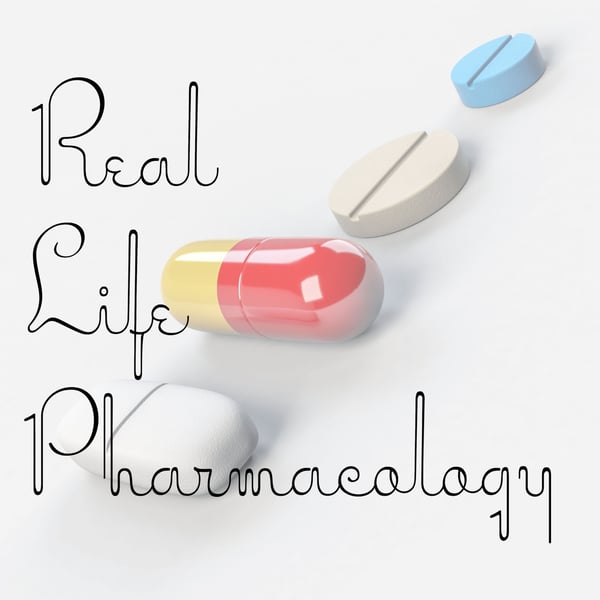Oxycodone Pharmacology
Real Life Pharmacology - Pharmacology Education for Health Care Professionals
Eric Christianson, PharmD; Pharmacology Expert and Clinical Pharmacist
5 • 716 Ratings
🗓️ 9 December 2021
⏱️ 13 minutes
🧾️ Download transcript
Summary
Oxycodone is broken down by CYP3A4 and CYP2D6. I discuss this further on the podcast and how interactions may alter concentrations.
When a patient stops taking oxycodone after being on it for some time, you must recognize common symptoms of withdrawal.
Oxycodone comes as in an extended-release and immediate-release oral formulation.
Transcript
Click on a timestamp to play from that location
| 0:00.0 | Hey, all, welcome back to the real-life pharmacology podcast. I'm your host, pharmacist, Eric Christensen. |
| 0:06.1 | I thank you so much for listening today. First, I want to apologize a little bit for my voice. |
| 0:11.7 | It's a little bit hoarse. And in all honesty, that's why I missed an episode last week. So that was my first miss in probably two and a half for three years. So again, |
| 0:23.0 | I apologize for the voice being a little scratchy, but I definitely didn't want to skip two weeks |
| 0:27.9 | and make you guys think I disappeared here. So anyway, always go check out real life pharmacology.com. |
| 0:36.3 | Go get that free 31 page PDF for the top 200 drugs. |
| 0:40.3 | Great resource, whether you're a student or practicing clinician. |
| 0:44.3 | And of course, support our sponsor, Medad101.com slash store. |
| 0:49.7 | All right, so the drug of the day today is oxycodone, which I have not covered yet, which is kind of |
| 0:55.6 | surprising to me as I was looking through my list. |
| 0:58.6 | Brand name of this medication, the extended release product is Oxycontin. |
| 1:04.9 | That's often a term you'll hear, a street term as well that you'll hear used. |
| 1:10.3 | This medication is an opioid and it is |
| 1:13.9 | oral only so comparing that to like morphine where we've got a ton of different dosage |
| 1:20.9 | forms oxycodone only comes as an oral agent at least that that's commercially manufactured. So like I mentioned, |
| 1:31.3 | it's an opioid analgesic, just a refresher mechanistically. This drug will bind opioid receptors |
| 1:38.6 | in the brain, central nervous system. And that's going to block those pain signals from getting to the brain. So essentially, |
| 1:48.0 | this doesn't allow the patient to perceive pain or at least perceive it to a significant extent. |
| 1:56.1 | They recognize that they may be hurt or injured, whatever the case may be, but their brain doesn't allow them |
| 2:02.0 | to perceive those pain signals coming to the central nervous system. So again, it doesn't really |
| 2:08.1 | reduce inflammation at the sight of the pain or whatever the case may be, but it actually just |
| 2:14.9 | blocks the signals. |
... |
Please login to see the full transcript.
Disclaimer: The podcast and artwork embedded on this page are from Eric Christianson, PharmD; Pharmacology Expert and Clinical Pharmacist, and are the property of its owner and not affiliated with or endorsed by Tapesearch.
Generated transcripts are the property of Eric Christianson, PharmD; Pharmacology Expert and Clinical Pharmacist and are distributed freely under the Fair Use doctrine. Transcripts generated by Tapesearch are not guaranteed to be accurate.
Copyright © Tapesearch 2025.

